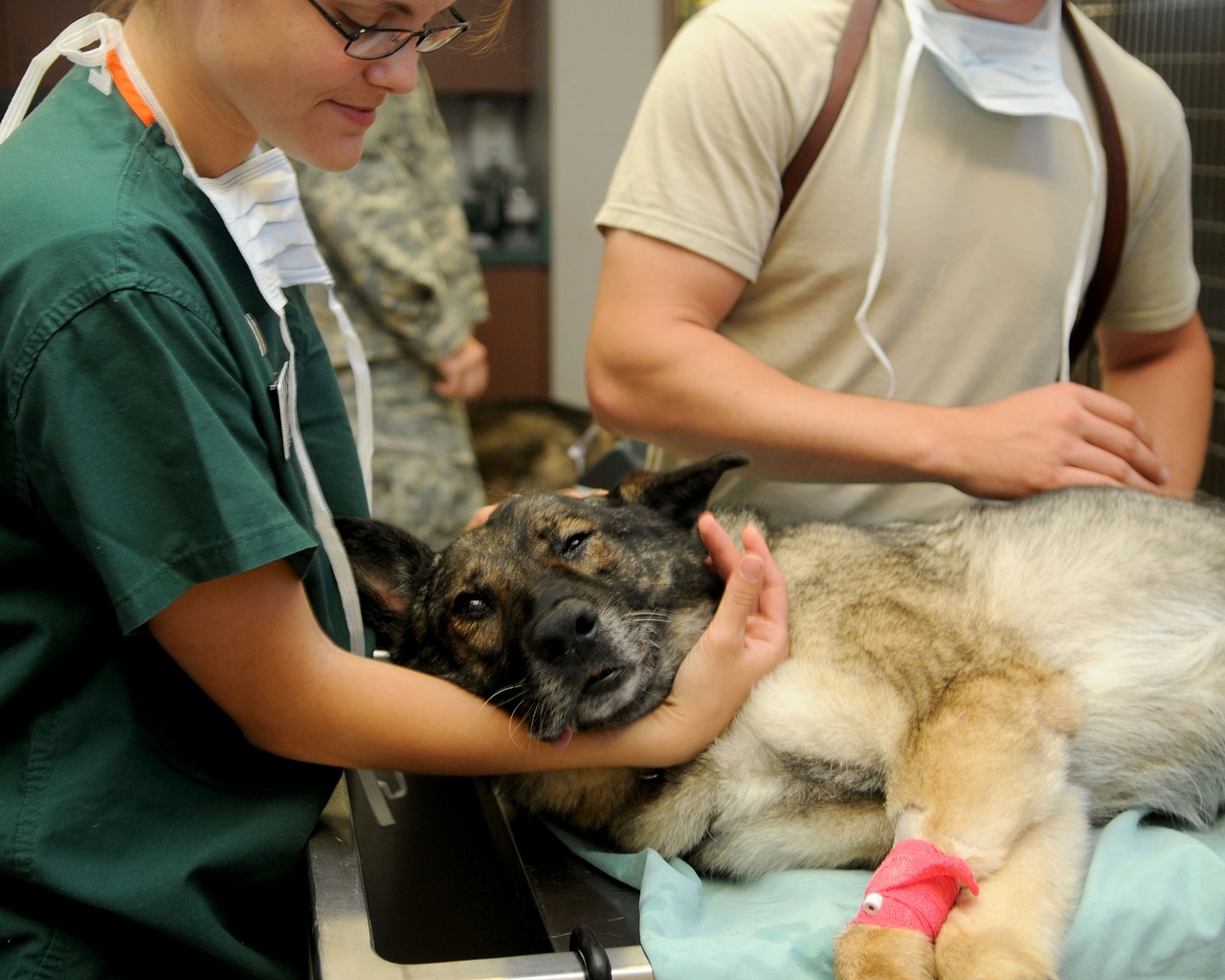Hire Medical Director
In the veterinary industry, a Medical Director plays an essential role in delivering consistently high-quality care. Moreover, the right leader elevates clinical standards, supports doctor development, and aligns day-to-day decisions with long-term strategy. Because patient outcomes, client experience, and team morale are tightly linked, finding the right Medical Director can immediately enhance operational efficiency, reduce costly errors, and foster a positive work environment. Consequently, by hiring top talent, practices navigate complexity with confidence and, ultimately, achieve durable success.
Why Hire a Medical Director?
A Medical Director is vital for organizations that prioritize animal health, clinician growth, and organizational alignment. Not only do they set the clinical vision, but they also translate that vision into accountable processes, measurable outcomes, and practical coaching. In addition, they guide change management, which helps teams avoid common pitfalls and sustain improvements.
Leadership and Vision
A Medical Director articulates the medical philosophy, defines the standard of care, and connects daily workflows to organizational goals. Therefore, teams stay aligned, doctors feel supported, and clients experience consistent excellence.
Operational Efficiency
Because a Medical Director analyzes throughput and handoffs, they identify bottlenecks and implement evidence-based solutions. As a result, schedules stabilize, room use improves, and the practice serves more clients effectively.
Regulatory Compliance
Veterinary regulations are complex and evolving. Accordingly, the Medical Director establishes protocols that meet state licensing requirements, DEA controls, and OSHA safety expectations, thereby mitigating legal and reputational risk.
— See: AVMA compliance resources (avma.org), DEA Diversion (deadiversion.usdoj.gov), OSHA (osha.gov).
Quality of Care
They build and maintain clinical SOPs, anesthesia checklists, pain-management pathways, and follow-up standards. Consequently, outcomes improve, complications decline, and five-star reviews increase.
Team Development
Finally, the Medical Director mentors veterinarians and technicians through case reviews, CE planning, and feedback loops. Because growth feels intentional and fair, retention improves and culture strengthens.
Types of Medical Director
Different practices require different leadership profiles; therefore, clarifying your primary need will accelerate a great hire.
-
Clinical Medical Director – Oversees day-to-day medical operations, case review, rounds, and quality assurance. In addition, they coach associates and standardize protocols.
-
Veterinary Rehabilitation Medical Director – Focuses on PT/rehab programs, modalities, and outcomes tracking for recovering patients, thereby expanding service lines.
-
Emergency & Critical Care Medical Director – Manages ER/ICU readiness, triage pathways, and time-to-treatment metrics; consequently, urgent outcomes improve.
-
Specialist Medical Director (e.g., Surgery, Dermatology, Oncology) – Provides niche leadership, elevates complex case management, and trains general staff in specialty-adjacent care.
-
Research Medical Director – Oversees clinical trials, ethics, and data integrity; furthermore, they connect your practice to innovation and academic partners.
Where to Find a Medical Director
Because top leaders are often passive candidates, a multi-channel approach works best.
-
Online Job Boards – Indeed, Glassdoor, and niche boards broaden reach; however, screening for true leadership depth can be time-consuming.
-
Staffing Agencies – Specialized firms quickly surface pre-vetted leaders; admittedly, fees apply, yet time-to-hire and mis-hire risk typically drop.
-
Professional Networks – LinkedIn, conferences, and state VMA events yield warm referrals; nevertheless, this route requires consistent outreach.
-
Pulivarthi Group – We deliver calibrated shortlists of pre-vetted Medical Directors matched to your goals, systems, and culture—so you interview fewer people and make better choices faster.
Hiring Challenges (and How to Solve Them)
Difficulty Assessing Skills
Leadership resumes can look similar. Therefore, add scenario-based exercises (e.g., “ER backlog + staff shortage—your 30-day plan?”) and request sample SOPs or M&M review notes.
Ensuring Cultural Fit
Values misalignment drives turnover. Consequently, map your core values, create behavioral prompts (“Tell me about a time you held a peer to a standard”), and include peer panels.
Managing High Turnover
Director churn destabilizes teams. Thus, clarify authority, decision rights, and success metrics up front; additionally, offer realistic resources and admin support.
Varying Experience Levels
Not all leadership is equal. Accordingly, scorecard candidates on strategy, coaching, metrics, and change management—then stack-rank with weighted criteria.
Limited Candidate Pool
Senior veterinary leaders are scarce. Therefore, widen geography, consider relocation, enable flexible schedules, and partner with specialized recruiters.
Qualifications and Licenses
While specifics vary by state and practice type, successful Medical Directors typically bring:
-
Doctor of Veterinary Medicine (DVM/VMD) – Baseline clinical authority.
-
Active State Veterinary License – Required to practice; verify with your state board or AAVSB tools (aavsb.org).
-
Board Certification (optional but valuable) – Signals advanced competency and credibility.
-
5–10+ Years of Clinical Experience – Ensures judgment under pressure and mentoring depth.
-
Management Training – CE in leadership, HR, finance, and conflict resolution (e.g., VHMA/CVPM courses, leadership programs at AVMA).
Sample Medical Director Job Description
Job Overview
The Medical Director leads clinical operations, quality assurance, and team development to ensure exemplary patient care and a consistent client experience.
Key Responsibilities
-
Define standard of care; build and maintain medical SOPs.
-
Lead case rounds, M&M reviews, and coaching for veterinarians.
-
Oversee schedule design, equipment priorities, and pharmacy controls.
-
Ensure OSHA/DEA/state compliance; coordinate audits and training.
-
Track KPIs (recheck adherence, anesthesia safety, time-to-treatment) and report results.
-
Partner with practice manager on capacity planning and hiring.
Required Skills
-
Clear, empathetic communication; confident decision-making.
-
Data fluency (EMR/PIMS metrics); process improvement mindset.
-
Conflict resolution and change-management leadership.
Qualifications
-
DVM/VMD, active state license; board-certified preferred.
-
5+ years clinical experience; prior leadership strongly preferred.
Interview Questions (and What You’re Measuring)
-
What is your leadership style—and how has it evolved?
Measures self-awareness, adaptability, and coaching approach. -
How do you prioritize patient care when time and resources are tight?
Assesses clinical judgment and ethical reasoning. -
Describe a difficult clinical or personnel situation you resolved.
Evaluates conflict skills, accountability, and follow-through. -
Which protocols have you implemented that measurably improved outcomes?
Looks for data-driven leadership and sustained change. -
How do you support staff development across varied experience levels?
Probes mentoring frameworks, feedback cadence, and CE strategy.
When Should You Hire a Medical Director?
You should hire when growth, complexity, or variability begins to strain clinical consistency. For example, if you’re adding doctors, expanding hours, launching urgent care, or opening specialty lines, centralized clinical leadership becomes essential. Likewise, rising rechecks, documentation drift, or review volatility signal it’s time. Therefore, bring in a Medical Director when:
-
Capacity expands faster than SOPs.
-
ER/urgent pathways lack clear triage.
-
Associates need structured mentorship.
-
Compliance responsibilities outpace existing oversight.
-
Quality metrics fluctuate without root-cause correction.
How to Test Medical Director Skills
Because this role blends medicine, management, and communication, use a multi-method assessment:
-
Role-Specific Simulations – 30-/60-/90-day plans for backlog reduction, anesthesia QA upgrades, or DEA audit prep.
-
Real-World Tasks – Redline a sample SOP, then present the rollout plan.
-
Past Project Reviews – Ask for pre/post metrics from a protocol change (e.g., dental post-op calls, analgesia compliance).
-
Behavioral Interviews – Probe accountability, values, and conflict patterns with STAR responses.
Cultural Fit Assessment
Cultural alignment sustains results; consequently, evaluate it deliberately:
-
Situational Prompts – “A senior doctor resists a new protocol—how do you respond?”
-
Values Alignment – Map past behavior to your core values (empathy, transparency, ownership).
-
Team Involvement – Include technicians and CSRs; then, collect structured feedback.
-
Communication Review – Assess clarity in emails, huddle talk tracks, and client-facing explanations.
Average Salary in the U.S.
Medical Director compensation typically ranges from $100,000 to $180,000+ annually, depending on geography, scope (ER, specialty, multi-site), and performance incentives. Furthermore, packages often include production, leadership stipends, CE budgets, relocation support, and retention bonuses. For benchmarking and benefits guidance, see AVMA salary and economic reports (avma.org).
Medical Director–Specific SOPs (and How to Build Them)
Patient Care Protocols
Standardize SOAP documentation, analgesia pathways, anesthesia checklists, and recheck SLAs. Consequently, variability drops and outcomes stabilize.
Emergency Response Procedures
Define triage criteria, code roles, and escalation ladders; additionally, rehearse with drills and post-event debriefs.
Staff Training Guidelines
Create a 30/60/90 curriculum per role, including competency sign-offs, CE targets, and periodic skills labs.
Quality Assurance Checks
Establish audit cadences (charts, anesthesia, pharmacy, CSR call-backs) with KPIs, dashboards, and corrective action loops.
— Reference: AAHA standards and guidelines (aaha.org).
Build Method
Start with your current best practice, map workflow, add exception branches, pilot with a micro-team, gather feedback, then publish and train.
Retention: How to Keep a Great Medical Director
Retention hinges on support, clarity, and recognition. Therefore:
-
Offer Competitive, Transparent Compensation with aligned incentives.
-
Foster a Supportive Partnership between Medical Director and Practice Manager.
-
Invest in Professional Development (CE, conferences, leadership academies).
-
Encourage Feedback & Communication via regular 1:1s, dashboards, and shared decision rights.
-
Protect Work–Life Balance with realistic admin time and protected focus blocks.
Hire a Medical Director with Pulivarthi Group
Pulivarthi Group specializes in veterinary leadership recruitment. Because we pre-vet for clinical excellence, leadership behavior, and culture fit, we deliver calibrated shortlists—not long lists. From scorecard design and scenario assessments to references and offer support, we shorten time-to-hire while reducing mis-hire risk. If you’re scaling services or seeking steadier clinical outcomes, we’ll match you with a Medical Director who leads with clarity and delivers results.











